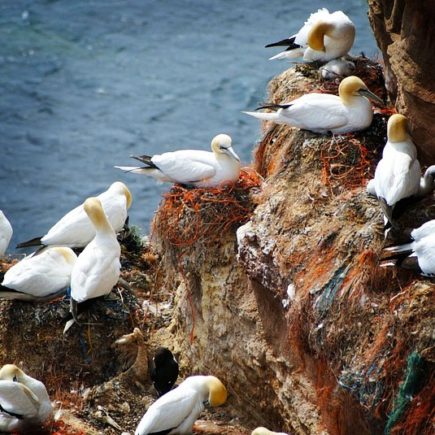

"Warm-water species such as thresher sharks, hammerhead sharks, and mahi mahi (aka dolphinfish) were sighted farther north than ever before," said a 2016 report on "The Blob" in the peer-reviewed magazine Oceanography. This vast marine heatwave caused mass stranding of marine mammals and seabirds along the west coast of the United States and Canada and killed off swathes of seagrass meadows and kelp forests.
#WAVE KILLED MARINE MASSE PATCH#
In 2011, a 10-week ocean heatwave off western Australia shattered the local underwater ecosystem and pushed commercial fish species into colder waters.Īt the end of 2013, an unusually warm patch of water that became known as "The Blob" appeared near Alaska and began to expand, stretching all the way to Baja California around 4,000 kilometers away by late 2015. They won't just stay in place when the water is too hot, so the question is how far must they go to find cooler water?" he said. "It's important because we know that many marine species can quickly move long distances to find favorable habitat. National Oceanic and Atmospheric Administration told AFP. Thermal displacement "adds a new dimension" to our understanding of these heatwaves, lead author Michael Jacox of the U.S. Previous research focused on measuring the intensity of the temperature change at the location of the heatwave and the effects on static habitats, like kelp forests and coral reefs, researchers said. The researchers looked at how far a species caught in a marine heatwave would have to travel to get back to a normal water temperature, in what they term "thermal displacement." They are an additional stress on oceans that are also seeing long-term warming, says the study published in the journal Nature. Researchers said the increasing number of marine heatwaves are a sudden shock to local ecosystems and their effects can last months or in some cases years. Hot spells can cause dramatic changes to ocean ecosystems, devastating coral habitats, killing large numbers of seabirds and forcing species like fish, whales and turtles into colder waters.

Fish and other marine life may have to flee thousands of kilometers to escape damaging heatwaves, according to research published Wednesday, highlighting the scale of disruption caused by these increasing surges in ocean temperatures.


 0 kommentar(er)
0 kommentar(er)
